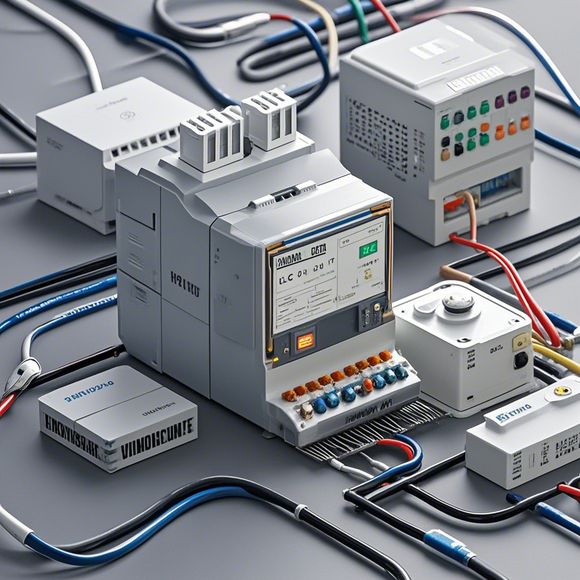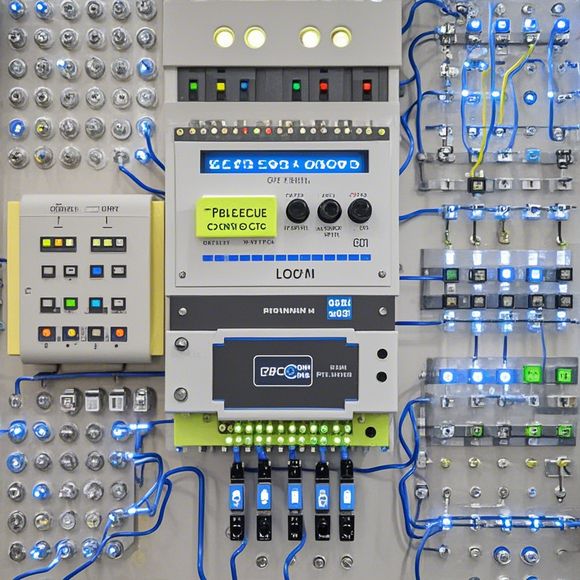PLCs - Plug-and-Play Control Systems
1. What is a PLC?

A programmable logic controller (PLC) is an electronic device designed to automate industrial processes and control systems. It is a versatile, reliable, and efficient tool that can be used for various applications such as manufacturing, process control, automation, and robotics. PLCs are widely used in industries where precise timing, high reliability, and ease of programming are required.
2. Why use PLCs?
PLCs offer several advantages over other control systems such as analogue controllers, microcomputers, or personal computers. Firstly, they are compact and easy to install, which reduces the installation time and cost. Secondly, they provide a user-friendly interface that makes it easy to monitor and manage the system. Thirdly, PLCs have a high degree of flexibility and adaptability, allowing them to be easily customized to meet specific needs. Finally, they are reliable and durable, with long lifespans and minimal maintenance requirements.
3. How do PLCs work?
PLCs are based on the concept of programmable logic, which allows them to execute complex algorithms and procedures automatically. They consist of a microprocessor, memory, input/output devices, and a variety of sensors and actuators. The microprocessor is responsible for processing the instructions from the program code stored in memory, while the input/output devices are used to read and write data into and out of the system. The sensors measure physical parameters such as temperature, pressure, and flow rate, while the actuators control valves, motors, and other devices to achieve desired results.
4. Example of PLC application in Manufacturing Processes:
In a manufacturing plant, PLCs are used to control and monitor production processes. For example, in a car assembly line, a PLC can be used to control the assembly steps, monitoring the quality of components and products, and adjusting production speed based on real-time data. The PLC communicates with sensors and actuators through digital signals, which enable it to detect errors, optimize performance, and reduce downtime. By using PLCs, manufacturers can improve efficiency, reduce waste, and maintain product quality.
5. Key Features of PLCs:
1、Programmability: PLCs allow you to program the system's behavior by writing a series of instructions in a special language called ladder logic. This ensures that the system can perform any task you require.
2、Robustness: PLCs are designed to withstand harsh environments and operate reliably even when exposed to extreme conditions. This includes dust, moisture, and vibration.
3、Flexibility: With the ability to connect to multiple inputs and outputs, PLCs can be programmed to respond to a wide range of inputs and generate corresponding outputs.
4、Interconnectivity: PLCs can communicate with each other and other systems via Ethernet or PROFIBUS, enabling the integration of different systems into a cohesive network.
5、Security: Many modern PLCs come equipped with built-in security features like alarms, fire protection, and emergency stop buttons to ensure your system remains safe and secure.
6、Cost-effective: Compared to other control systems like microcomputers or PCs, PLCs offer significant cost savings due to their simplicity, durability, and low maintenance requirements.
7、Ease of Use: PLCs typically come with user-friendly software and hardware that make programming and troubleshooting simple and straightforward.

8、Reliability: Thanks to their robust design and extensive testing, PLCs can withstand continuous operation without frequent malfunctions, ensuring reliable performance over time.
9、Scalability: With the addition of more processors or RAM, PLCs can handle larger amounts of data or more complex tasks without compromising on performance or reliability.
6. Benefits of Using PLCs:
1、Increased Efficiency: PLCs automate processes, eliminating human error and reducing downtime. This leads to increased productivity and reduced costs.
2、Improved Quality Control: With accurate data and precise control, PLCs can help maintain consistent product quality.
3、Reduced Maintenance: Because PLCs have fewer moving parts than traditional control systems, they require less maintenance, saving time and money.
4、Simplified Maintenance: PLCs have fewer moving parts and simpler designs, making them easier to maintain and repair compared to complex systems.
5、Flexibility: PLCs can be programmed to perform a wide range of functions, allowing for custom solutions tailored to specific needs.
6、Robust Design: PLCs are built to withstand environmental factors like dust, humidity, and temperature changes, ensuring long-term reliability in demanding environments.
7、Integration: PLCs can be integrated into existing systems seamlessly, allowing for easy expansion and modification of existing infrastructure without disrupting ongoing operations.
8、Customization: Users can customize PLCs based on their specific needs, from basic logic control to complex interfacing with external systems.
9、Cost-Effective: Despite being more complex than some alternative control solutions, PLCs often offer better value for money due to their reliability, scalability, and ease of use.
10、Training: While PLC programming initially takes time and effort, there are many resources available online and offline to teach users how to effectively use PLCs. These resources include tutorials, books, and training courses that provide comprehensive information on programming, troubleshooting, and maintenance. Additionally, many companies offer on-site training programs for their customers to ensure proper implementation and usage of their PLC systems.
Content expansion reading:
Articles related to the knowledge points of this article:
Smart Manufacturing Solutions with PLC Integrated Machinery
PLC Controller for Manufacturing Automation
PLC Programming for Automation Control in the Manufacturing Industry
PLC (Programmable Logic Controller) Control System Basics
The Role of Programmable Logic Controllers (PLCs) in Foreign Trade Operations